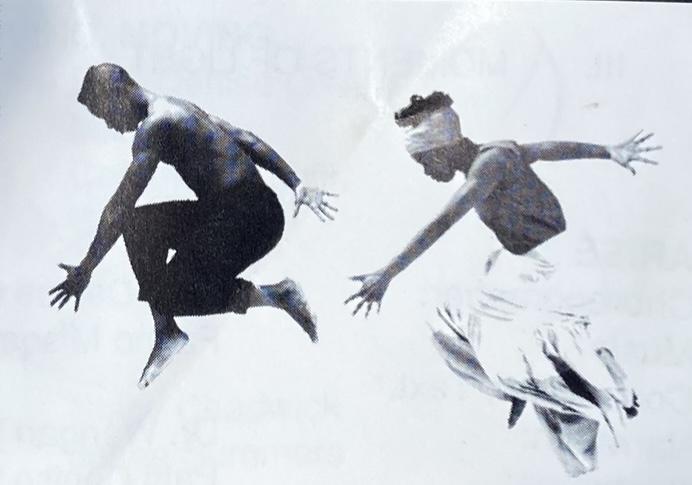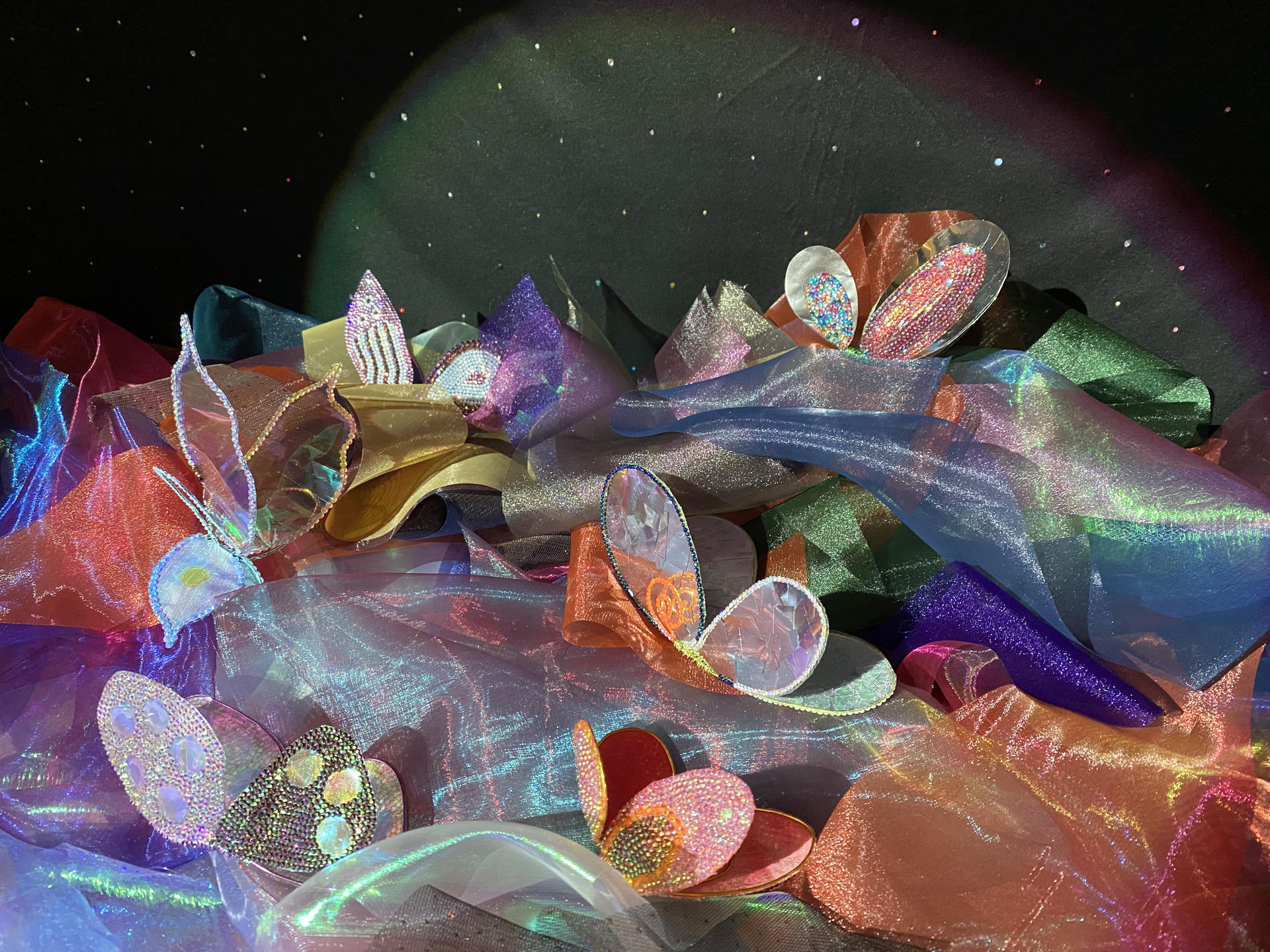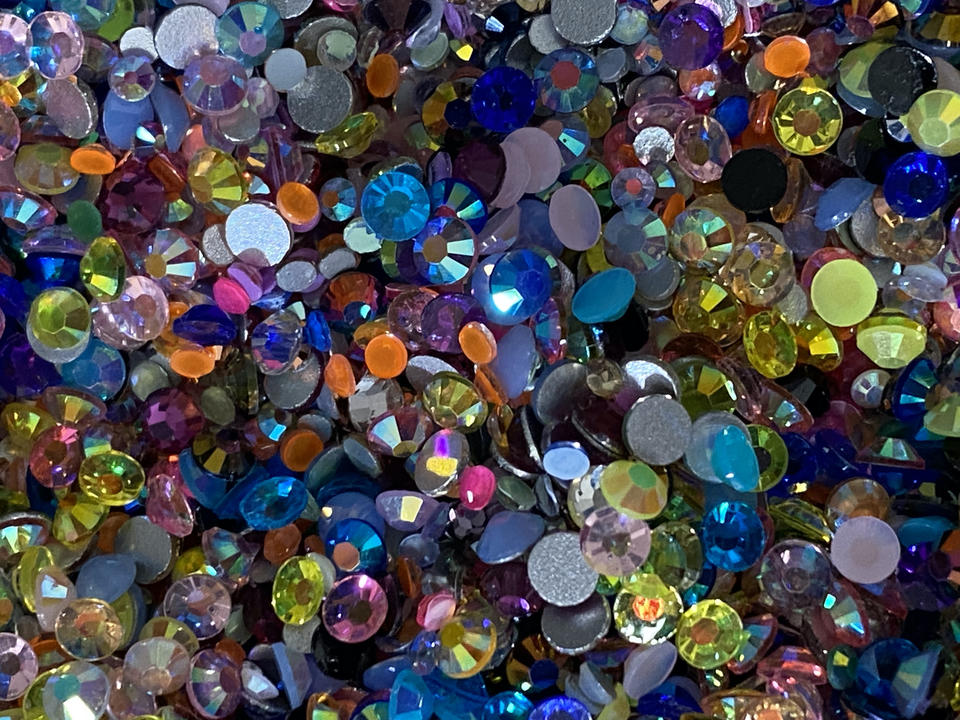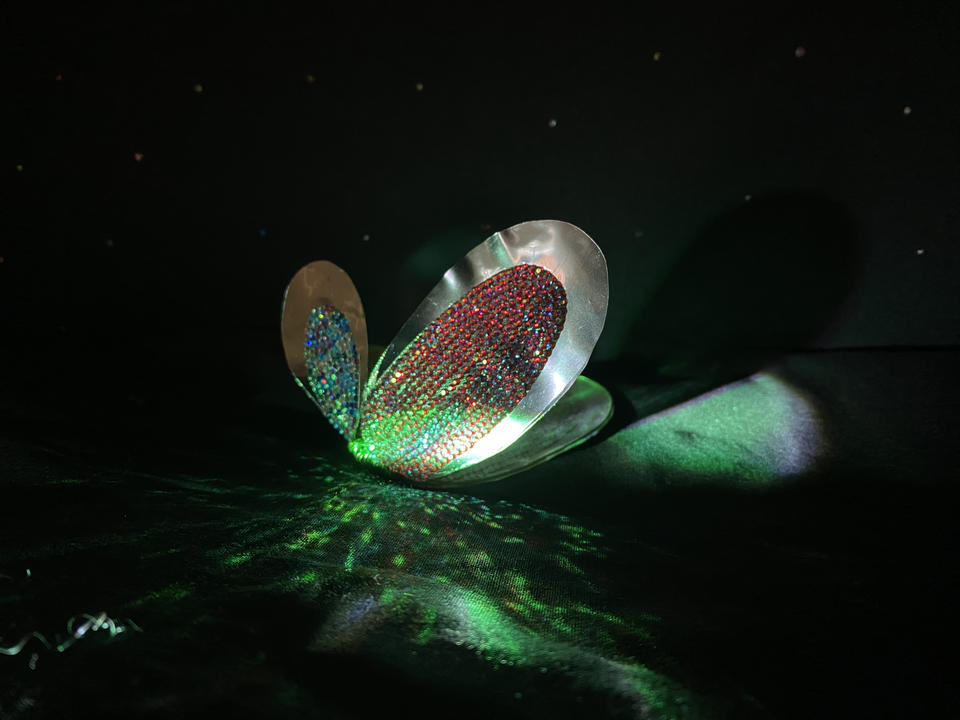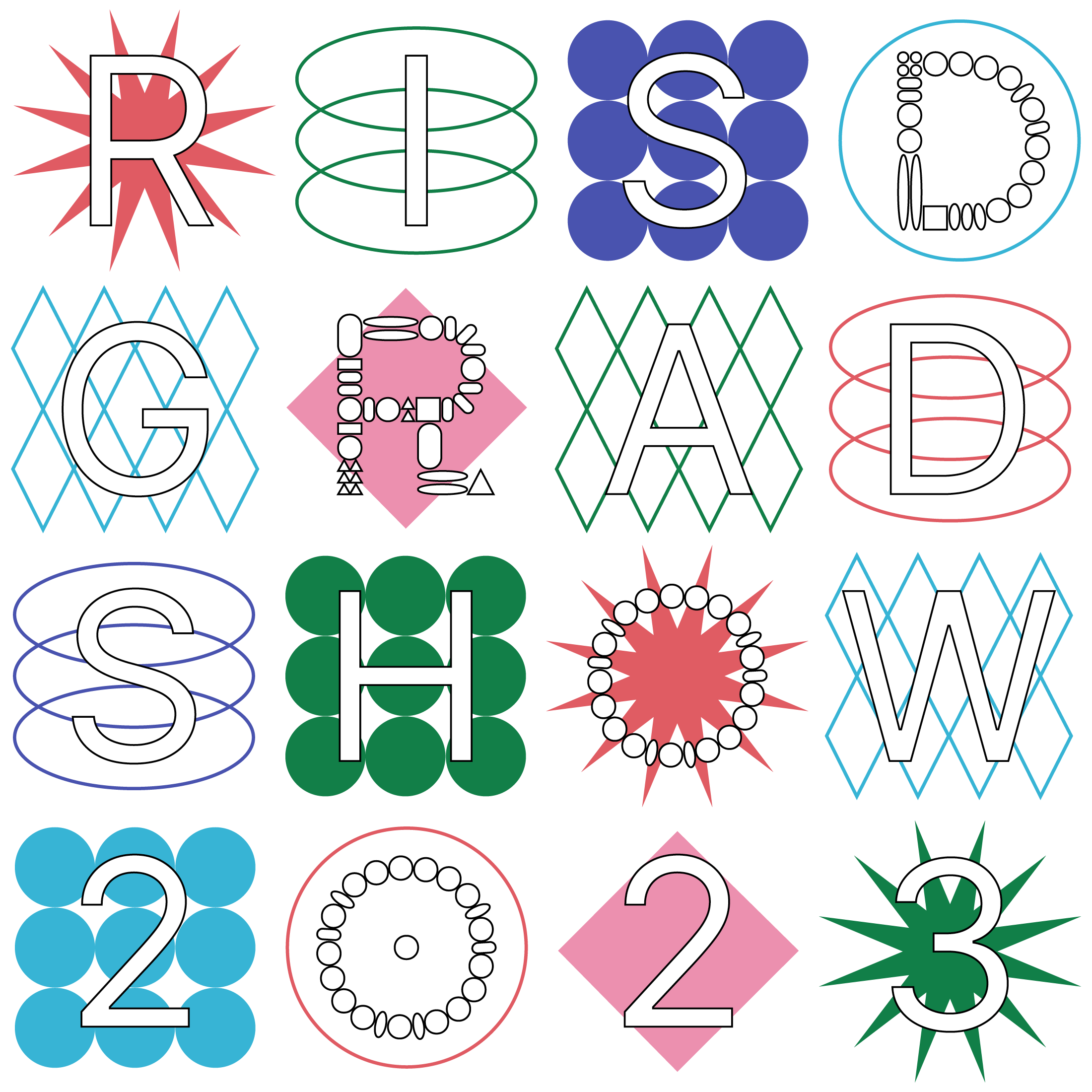“Light was a mist filtering down in muted colors. Was as wispy as smoke, but it did not reach the ground. It played odd patterns on pine limbs and bark. The forest sparkled and was
magical, as in a serene dawning” (Hamilton, p. 54).
The thought of a forest was there, this quote from The Magical Adventures of Pretty Pearl by Virginia Hamilton evidenced as the calling. Immediately I imagined the feel and look of the sun streaming through the trees. With four bamboo sticks that I painted with iridescent watercolors, I constructed a frame where I weaved fishing line through in a grided pattern. Luminous materiality is central to my work and is something I wanted to carry out again through textiles following my last two studio pieces. I laser-cut wavy designs out of varying mono and two-toned organza fabric with the idea to hang and overlap the pieces from the grided structure. I chose to suspend the whole structure to offer a glimpse into this magical forest. For the light source I initially thought about panning a beam of light across the overlapping fabric pieces, but decided to continue with my explorations in projecting through layers of fabric—as projection is light.
